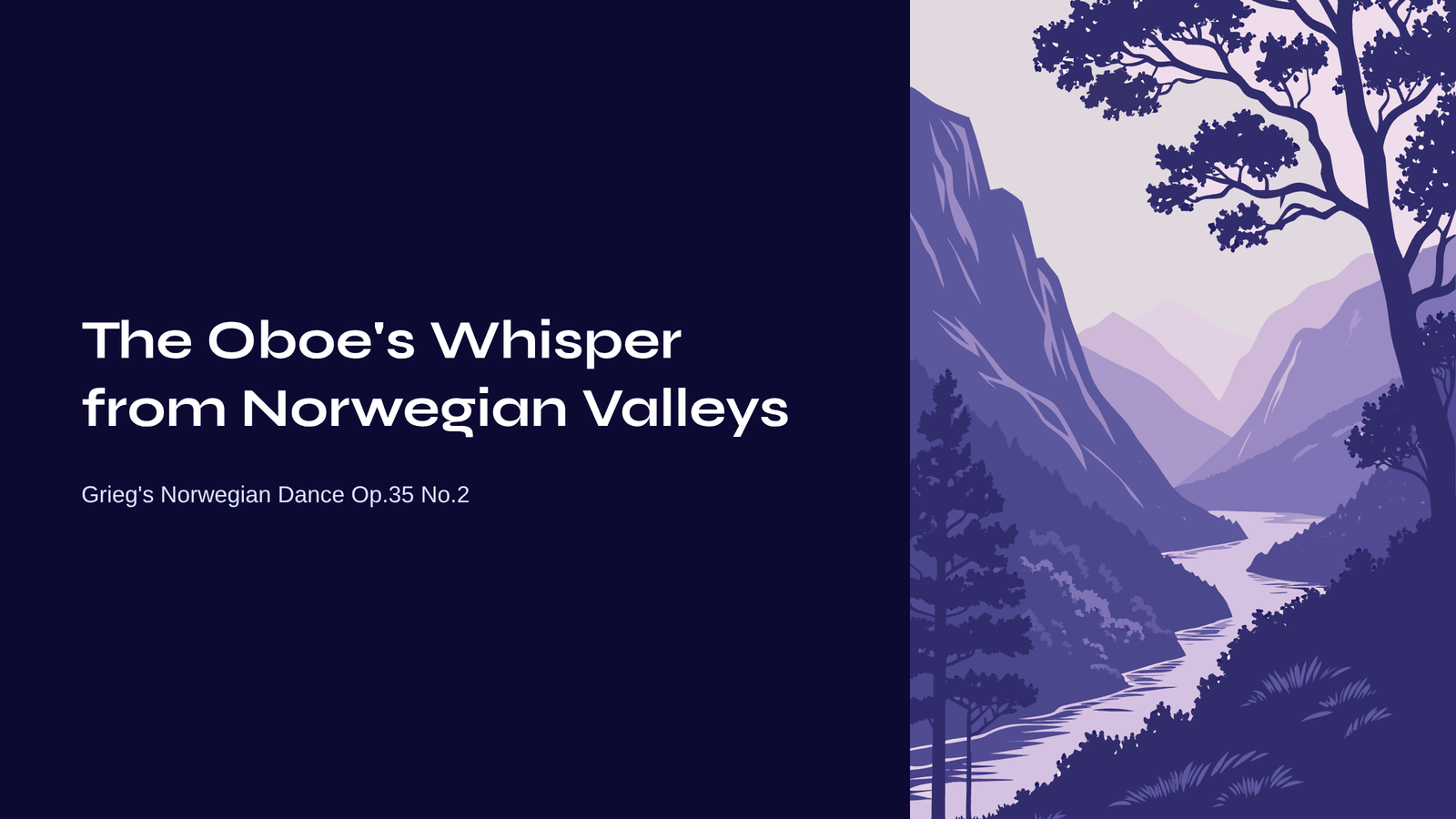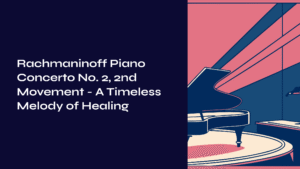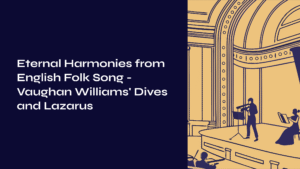Table of Contents
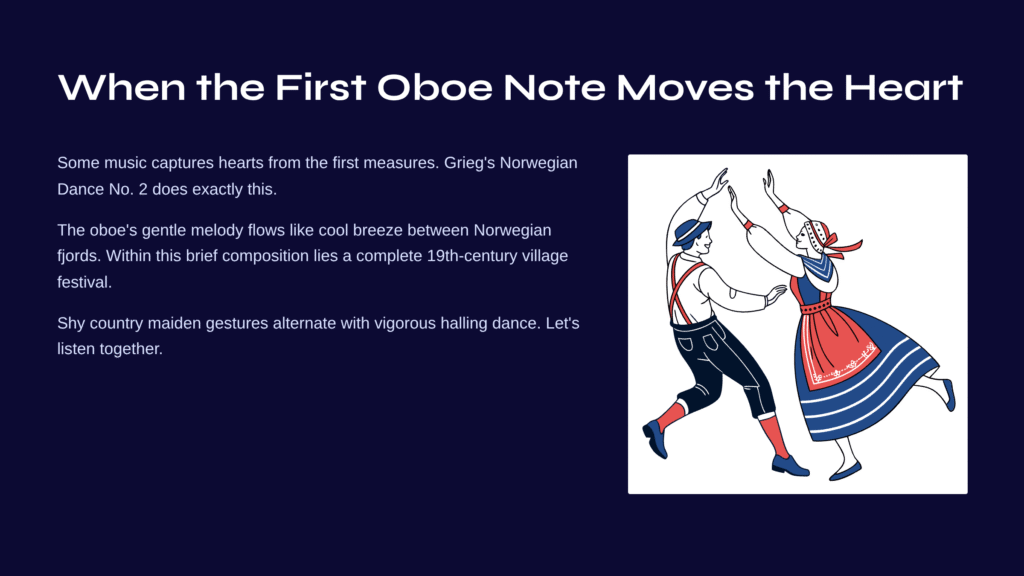
When the First Oboe Note Moves the Heart
Some music captures our hearts from the very first measures. Grieg’s Norwegian Dance No. 2 is precisely such a piece. The moment the oboe’s gentle, bashful melody begins to flow, it’s as if we feel the cool breeze drifting between Norwegian fjords.
Within this brief composition lies the complete festival landscape of a 19th-century Norwegian countryside village. The graceful gestures of a shy country maiden alternating with the vigorous halling dance of young men—shall we listen to this music together?
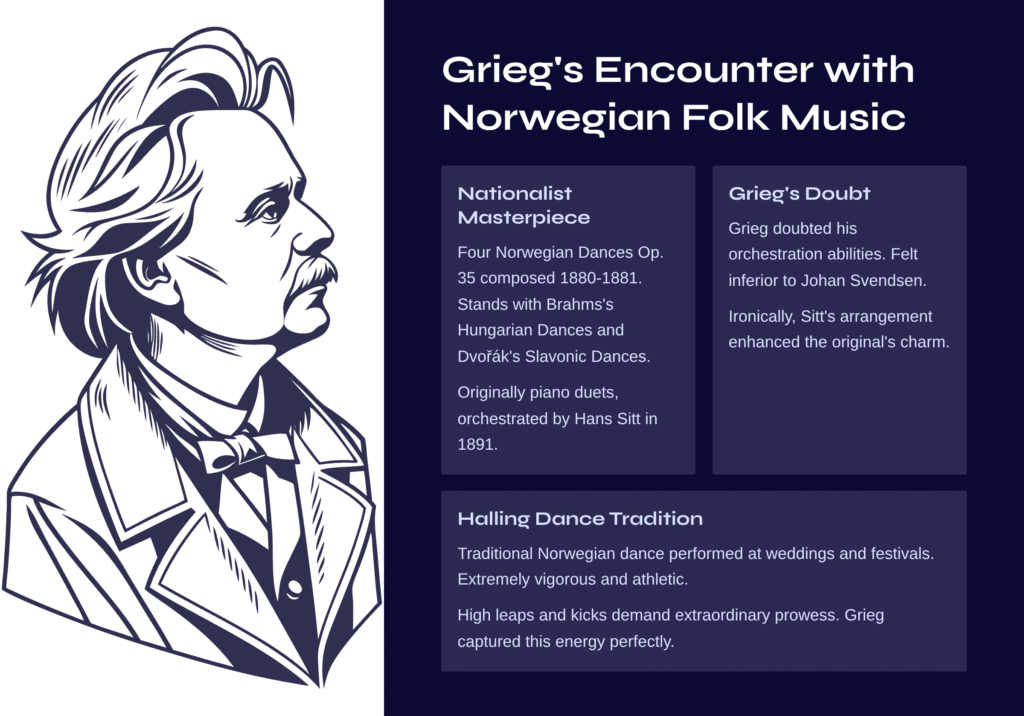
Grieg’s Encounter with Norwegian Folk Music
A Gem of 19th-Century Nationalist Music
Edvard Grieg’s (1843-1907) Four Norwegian Dances Op. 35, composed in 1880-1881, stands shoulder to shoulder with Brahms’s Hungarian Dances and Dvořák’s Slavonic Dances as a masterpiece of nationalist music. Originally composed as piano duets, the orchestral version we hear today was arranged by Hans Sitt in 1891.
Interestingly, Grieg himself doubted his orchestration abilities. Feeling inferior to his colleague composer Johan Svendsen, he chose not to orchestrate the pieces himself. Yet ironically, Hans Sitt’s arrangement ultimately enhanced the original’s charm—a fascinating twist in musical history.
The Dynamic Tradition of Halling Dance
The background of this music lies in the traditional Norwegian dance called Halling. This dance, performed by young men at weddings and festivals, is extremely vigorous and athletic. Characterized by high leaps and kicks, it demands extraordinary physical prowess. Grieg perfectly captured this halling energy in musical form.

No. 2: A Lyrical Treasure Box in A Major
The Shy Oboe’s First Greeting
The piece begins with the marking Allegretto tranquillo e grazioso (gently and gracefully). This moment when the oboe cautiously presents the opening melody alone represents the piece’s crowning glory. Like a young girl from a Norwegian mountain village shyly starting a conversation, this melody becomes utterly unforgettable once heard.
Unfolding over A major’s bright and warm harmonies, this theme can truly be described as “demure yet clever and charming.” The oboe’s unique timbre—slightly nasal yet warm—perfectly conveys the melody’s emotional essence.
The Ingenious Three-Part Structure
This piece follows an A-B-A ternary form but possesses a distinctive characteristic unlike other Norwegian dances. While the typical pattern is fast-slow-fast, No. 2 follows a slow-fast-slow sequence.
In the A section, the oboe’s lyrical theme develops alongside gentle string accompaniment. The horn’s warm timbre provides background support, creating a peaceful atmosphere.
The B section brings a sudden atmospheric shift. Modulating to C-sharp minor, a fierce halling dance begins. Brass instruments surge forward with frenzied triplets, evoking the image of young people dancing vigorously at a festival.
The A’ section returns to the initial quiet, graceful mood. The oboe theme reappears with subtle variations, bringing the piece to a gentle conclusion.

What I Discovered in This Music
Grieg’s Harmonic Genius
What most impresses me about this brief piece is Grieg’s harmonic language. Unlike typical Romantic harmonies, the modal colors characteristic of Norwegian folk music permeate the entire composition.
Particularly noteworthy is the pedal point (sustained repetition of the same note) at the piece’s opening, which imitates the resonance effects of the Hardanger fiddle, a traditional Norwegian instrument. Such careful attention to detail elevates this work beyond simple folk song arrangement to true artistic creation.
The Beauty of Contrast
What captivates me most is the piece’s dramatic contrast. The moment when the A section’s quiet, meditative atmosphere meets the B section’s fierce, dynamic energy creates an electrifying effect! It’s as if Grieg captured in music the natural transformation of a peaceful Norwegian lakeside suddenly swept by storms before returning to tranquility.
This contrast represents not merely musical technique but an expression of human emotional complexity. After all, we all harbor both shy, delicate aspects and passionate, intense sides within our hearts.
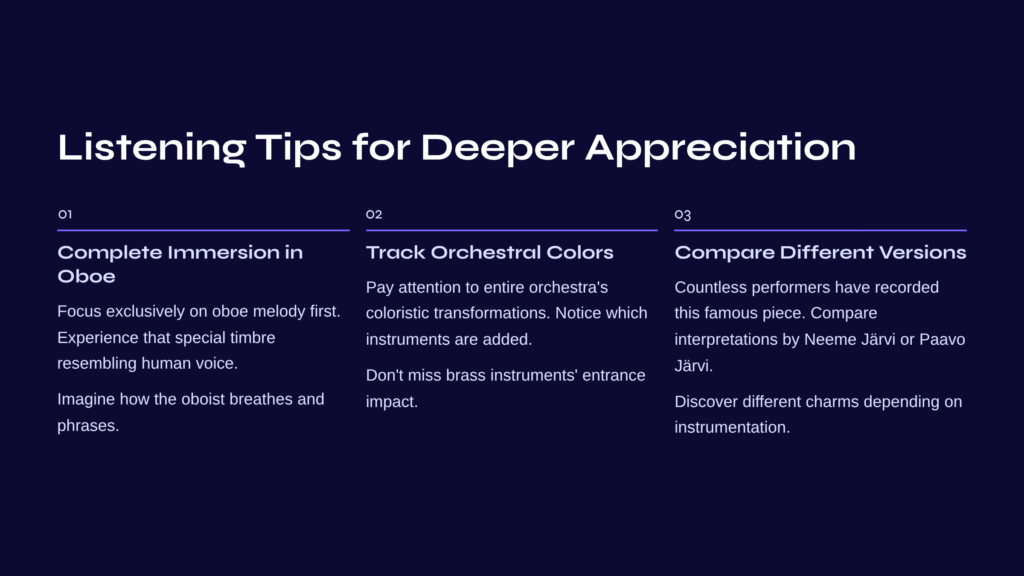
Listening Tips for Deeper Appreciation
Complete Immersion in the Oboe’s Timbre
On your first listening, focus exclusively on the oboe melody. Experience purely that special timbre—among woodwinds, the sound most resembling the human voice. Imagine how the oboist breathes and phrases the music.
Tracking Orchestral Color Changes
During your second listening, pay attention to the entire orchestra’s coloristic transformations. Notice which instruments are added when transitioning from the A to B section, and how the overall sound changes. Don’t miss the impact of the brass instruments’ entrance.
Comparing Different Performance Versions
This piece is so famous that countless performers have recorded it. It’s fascinating to compare interpretations by conductors like Neeme Järvi or Paavo Järvi, and there are even arrangements for recorder and chamber ensembles. You’ll discover completely different charms depending on the instrumentation.

A Norwegian Song Transcending Time
Grieg’s Norwegian Dance No. 2, though merely 2-3 minutes long, contains within it the soul of a people and the genius of a composer. This music, which vividly conveys 19th-century Norwegian mountain village festival scenes to us in the 21st century, demonstrates art’s power to transcend time and space.
When the oboe’s opening melody lingers in our ears, we’re not simply hearing a beautiful tune—we’re experiencing music’s magic that travels upstream through time, connecting past and present. The “wealth of unspoken harmonic possibilities” that Grieg discovered in Norwegian folk songs continues to move our hearts, reaffirming that music is indeed humanity’s universal language.
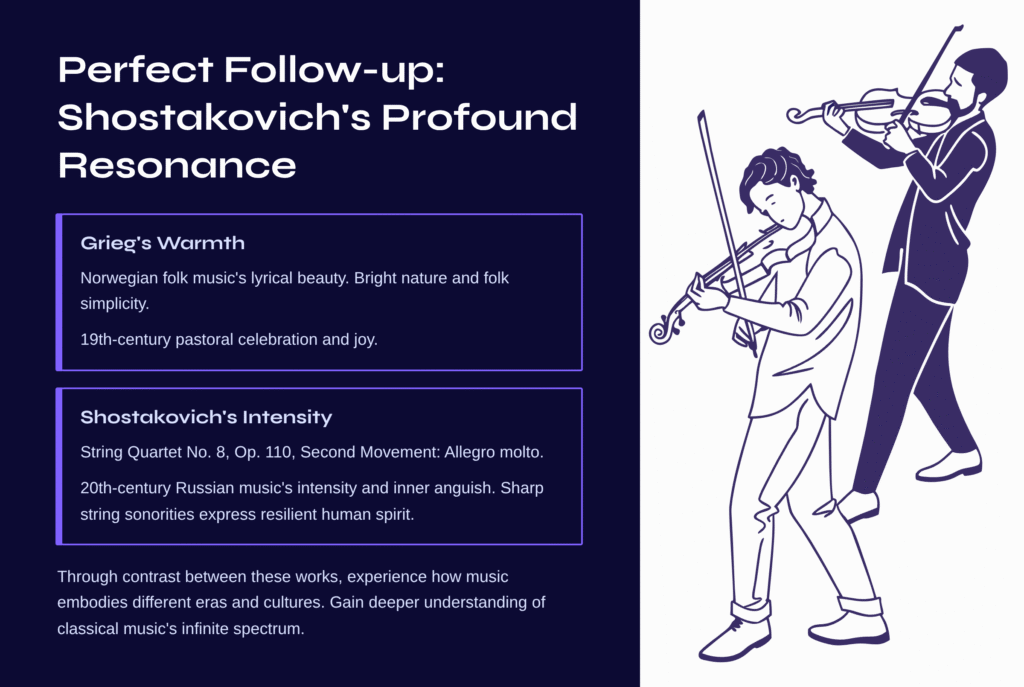
Perfect Follow-up: Shostakovich’s Profound Resonance
Having experienced Grieg’s lyrical and warm Norwegian folk music, I’d like to recommend a work from a completely different era and sensibility.
Dmitri Shostakovich’s String Quartet No. 8 in C minor, Op. 110, Second Movement: Allegro molto is a masterpiece embodying 20th-century Russian music’s intensity and inner anguish. While Grieg sang of Norway’s bright nature and folk simplicity, Shostakovich expressed through sharp string sonorities the resilient human spirit that refuses to yield even under war and oppression.
Through the contrast between these two works, you’ll experience how music can embody the emotions of different eras and cultures, gaining a deeper understanding of classical music’s infinite spectrum.
